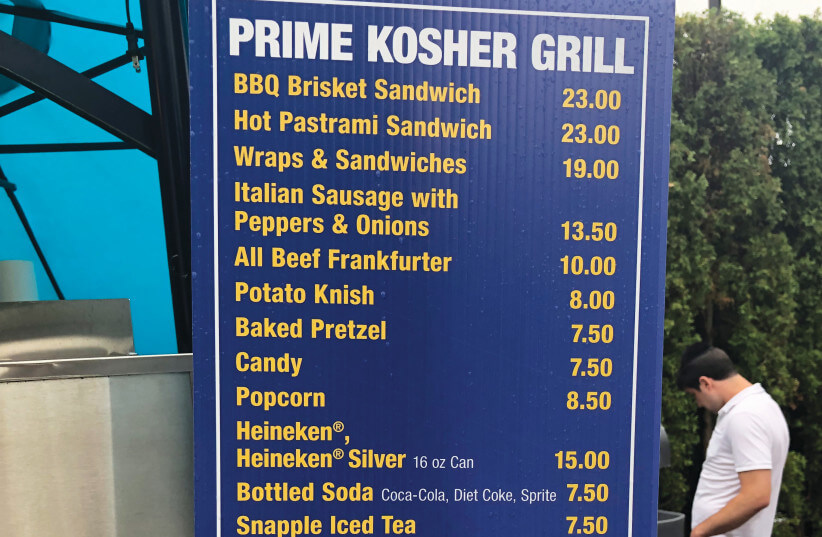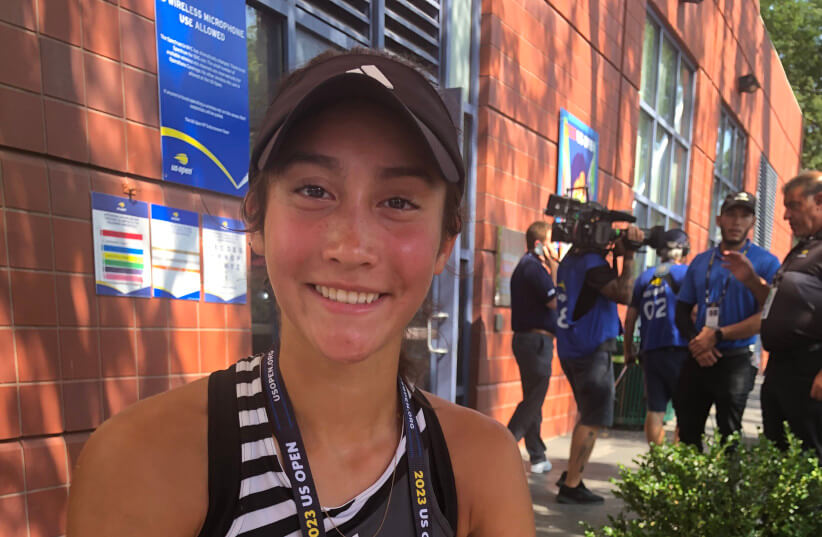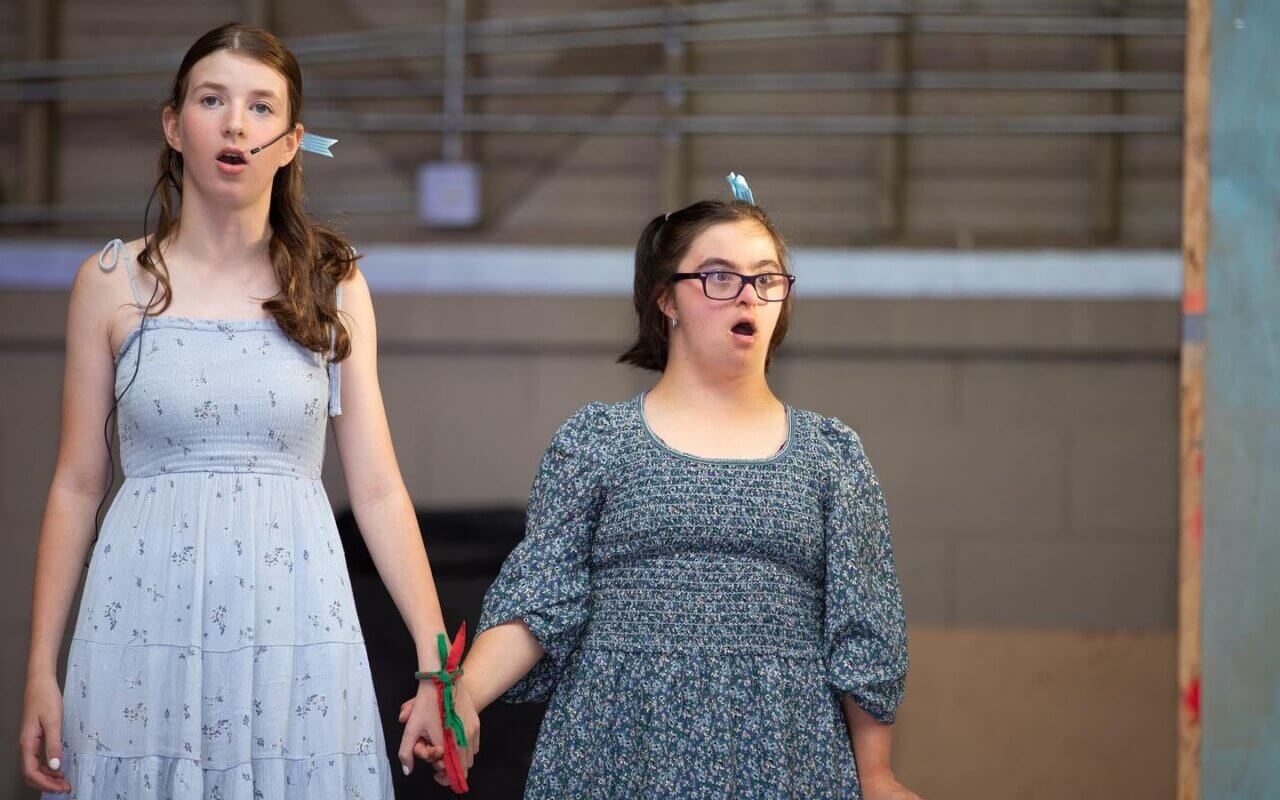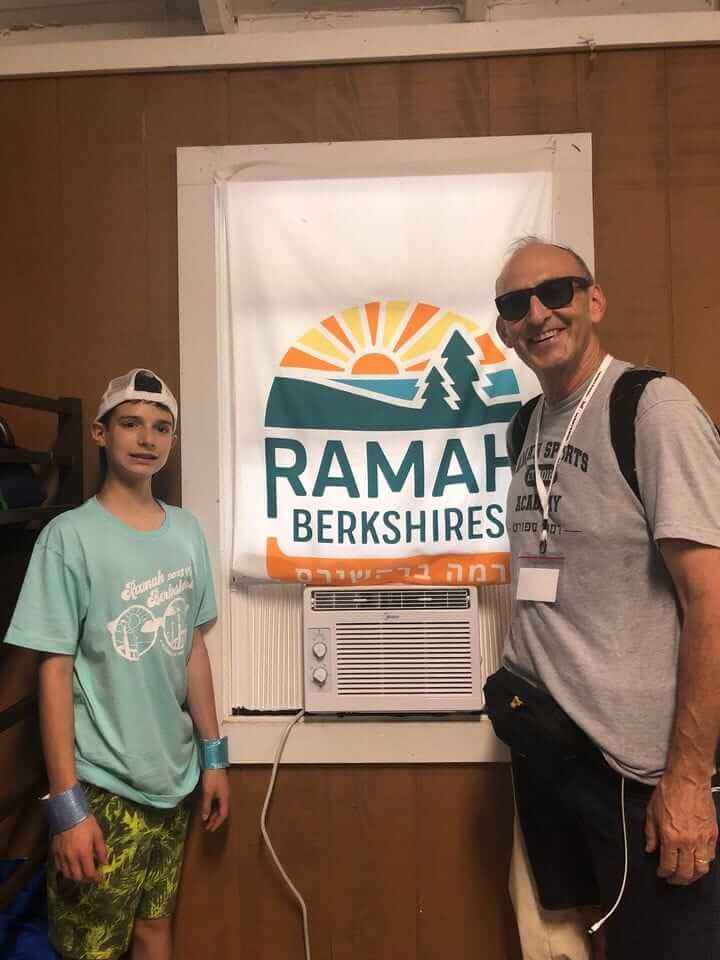Original Article On The Jerusalem Post
The US Open Tennis Championships in Queens, New York, is as well known for its dining options as for its world-class tennis.
With names like Eataly; Fare by Chef Alex Guarnaschelli; Franks and Fries; King Souvlaki; Crabby Shack; and Korilla BBQ, tennis fans enjoyed a variety of foods at the recently concluded (August 22-September 10) Grand Slam event, while sipping drinks from Baseline Cocktails; Aperol Spritz Bar; and Heinekin Bar. The US Open even had an official drink, the Honey Deuce (Grey Goose vodka, lemonade, and raspberry liqueur).
Thanks to PKS’s (Prime Kosher Sports) Kosher Grill, kosher-food-loving tennis fans enjoyed an assortment of hot and cold kosher foods, located in close proximity to non-kosher food, as well as great tennis. If their timing was right, observant fans were also able to participate in a Mincha and Maariv minyan.
“Having kosher food at the US Open means you don’t feel excluded. You are part of the crowd,” reported Eli Feit of Brooklyn, who was attending with two grandsons and their friend Chaim Fruchter of Passaic, New Jersey.
Feit, who enjoyed the brisket sandwich, was helping count to make sure there were enough men for Mincha, which was to take place at the exit to Court 12 as a four-hour, seven-minute five-set men’s singles match was letting out. Fruchter raved about his hot dog.

AT THE US Open: Tommy Paul (US) returns a shot against Roman Safiullin (Russia) during their Men’s Singles Second Round match, in Queens, New York, Aug. 30. (credit: Matthew Stockman/Getty Images)
Steven Davidson of Stamford, Connecticut, carefully held two hot dogs (one dressed in sauerkraut), wrapped in US Open monogrammed paper, as he participated in the minyan.
“Having kosher food at sporting events is pretty standard. It is nice to have a minyan when you have to say Kaddish,” he added.
Israeli David Danino, who lives in Karnei Shomron and is in the US through Sukkot as part of his job with Sukkot Depot, approached when he saw the crowd gathering for Mincha. He was racing to Court 17 to see No. 14 Tommy Paul in action versus Roman Saflullin. He planned to return to the kosher stand later in the evening for dinner. While excited about having kosher food at his first US Open, he enjoyed a kosher hot dog a few years back at a New York Knicks pre-season basketball game.
Julie Feinberg of Woodmere, New York, spoke with The Jerusalem Post as she balanced two cardboard containers of kosher sausage with peppers and onions, as well as a brisket sandwich, which she noted was “new this year.”
“I know we are spoiled New Yorkers [since kosher food is so plentiful], but having kosher food here makes the whole day easier and more enjoyable, – and you don’t get jealous of others [who don’t keep kosher] who have hundreds of choices.”
She was excited to sit and enjoy dinner before watching more tennis. “My daughter and I are starving!”
While the kosher items were tasty, they came at a price. A BBQ brisket sandwich or a hot pastrami sandwich set fans back $23, while wraps and sandwiches cost $19; Italian sausage with peppers and onions were $13.50; and a potato knish – $8.
Kosher food, and affordable too!
But for the first time in most kosher consumers’ lives, the kosher food prices were actually comparable to the prices of non-kosher food at the Open: Crispy chicken sandwich at Crown Say was $19.50; a gyro sandwich at King Soulvaki was $20, and spanakopita cost $18. The signature chicken and eggnog waffle cone at Melba’s American Comfort was a whopping $26; a single scoop of ice cream at Van Leeuwen was $9.50; and a Heineken or Amstel Light draught beer was $15. The US Open’s signature Honey Deuce was $22 – keep the glass!
ELI ARJE, in his second year operating Kosher Grill at the US Open (though there was a kosher vendor for several years before he took over), loves the opportunity to provide kosher food at this and other sports venues. “The experience is amazing. To see how many people are in and out of the venue all day is remarkable. Our line is always consistent. We serve over 2,500 products per day.”
Arje believes that all stadiums should offer kosher options, and noted that he is currently located in Maimonides Park (Brooklyn Cyclones), Citi Field (New York Mets), Yankee Stadium (New York Yankees), and Prudential Center (New Jersey Devils). “Baruch Hashem, we have [Jewsih] communities everywhere, and I think it’s so important to follow the laws of kashrut and give the Jewish fan an outlet to enjoy the full ballpark experience. We have a passion for sports, food, and seeing smiles on faces enjoying. I feel blessed that I am able to make a dream into reality. Every time I walk into a stadium, I feel like I’m a kid again, and I’m in awe of everything around me.”
Kosher consumers not willing to pay the steep prices for prepared food were able bring in sandwiches and other food items in a single-compartment drawstring knapsack or bag or they were able to enjoy small containers of kosher-certified yogurt, given out as free samples by Fage, a US Open sponsor.
Other kosher-certified, though pricey, items available throughout the grounds included bags of potato chips, popcorn, and bars of Van Leeuwen ice cream. Lavazza coffee was also on hand, along with soda and water.









